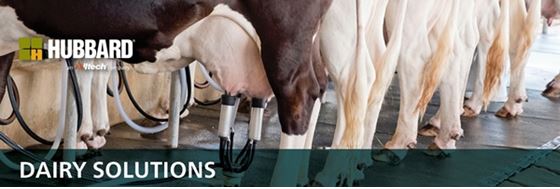Maximizing First Lactation Potential

By Hubbard Feeds, Reprinted with Permission:
The goal of most dairies is to efficiently raise high-quality heifers so that the heifers can enter the milking herd and become profitable replacements. In order to attain this goal, these heifers have to be reared in an efficient and economical manner that does not affect future performance potential. Heifer-raising costs represent one of the highest costs on the dairy farm, often second only behind feed costs for the lactating herd. Because of this, it is important that each farm is raising the correct number of replacements for the herd. Raising too many heifers can quickly add unnecessary costs. The high feed prices that we have seen during the past year have also made it more challenging to attain the goal of raising heifers economically.
A lot of factors play roles in future production potential. Many heifers have exceptional genetic potential, but without optimal management, environment, and nutrition throughout the growing period until first calving at 22–24 months of age, this genetic potential cannot be fully expressed. The pre-weaning period is very important and often receives a great deal of attention; however, the grower phase and beyond are still very important and can have an impact on future performance. By focusing on the following key areas post-weaning, you can maximize your heifer’s first lactation potential and herd longevity.
Pre-pubertal period
This stage occurs from shortly after weaning to the onset of puberty (approximately 4–10 months of age). During this stage, unfortunately, heifers typically do not receive much attention and will often go unnoticed. However, this is a critical time — producers may be unknowingly affecting future production, as nutrition can have a significant impact during this period.
High-energy rations may be negatively affecting mammary development, particularly excess mammary fat pad mass, as suggested by several researchers. Because the mature body weight of the herd varies among farms, the average daily gain during this stage in order to meet growth targets is farm-specific, but it will typically fall between 1.8 and 2 pounds per day. Therefore, rations should target an average daily gain that promotes the growth needs of the farm without accumulating excess body condition.
Breeding
Age at breeding is determined by the farm’s goal for age at first calving. At breeding, heifers should be at 55–60% of mature body weight, as shown in Table 1 below. Average daily gain needs to stay on track in order to attain this goal. It is important to make sure that heifers are not only of adequate age, but also of adequate size, at breeding. This helps to ensure that heifers are large enough to carry a calf, and it helps to decrease dystocia and maintain production potential.
Cows are not considered to be mature until they have reached their third lactation. Therefore, when determining the mature body weight of the herd, consider the weight of third lactation-or-greater cows that are between 80 and 120 days in milk. Fresh cows, cull cows, and cows with high days in milk typically have skewed body weights and should not be considered when determining the mature body weight of the herd.
After breeding, heifers should maintain adequate gains without attaining excess body condition. As heifers mature, the rate of adipose accumulation increases while the rate of lean tissue growth decreases. Excess body condition accumulation at this time can lead to metabolic issues later as heifers calve. Even moderate-quality forages can cause heifers to become over-conditioned during this time. Be sure to monitor body condition closely. At times, supplementing heifer rations with lower-energy, higher-fiber feedstuffs may be needed to manage body condition.
Calving
Recent research has also shown that trace mineral sources play a role in first lactation performance. The impact has even been shown to start with the dam’s trace mineral source during the dry period. Heifers born to dams that received organic trace minerals during the dry period, and that then went on to receive organic trace minerals in the milk replacer and starter and then as heifers in the TMR, tended to calve 22 days earlier and produced more milk. The heifers receiving organic trace minerals averaged over 2 pounds more milk per day over the first 100 days in milk than heifers receiving inorganic trace minerals. This suggests that trace mineral nutrition such as that utilized in Hubbard’s Blueprint® program, when used during heifer rearing and in the dry period, is important for improved reproduction and milk production.
At first calving, heifers should be 22–24 months of age and approximately 82–85% mature body weight in order to best balance the cost of raising the heifer while achieving lifetime production potential. Heifers calving before 22 months of age typically produce less milk over their first lactation. These heifers typically will not have reached the desired size at calving and will continue growing during lactation at the expense of milk production. It is important to note that attention should be focused not only on body weight at calving but on frame size and body condition as well. Heifers that are heavier with small frame size, or with greater body condition at calving, do not generally last as long in the herd. These heifers also experience the greatest body weight loss after calving.
Several aspects, such as genetics, management and nutrition, can all impact first-lactation production potential. It is very important to make sure that body weight goals are met at integral times throughout the growing period to ensure that the heifer is set up for future success.
References:
NASEM (National Academies of Science, Engineering, and Medicine). 2021. Nutrient Requirements of Dairy Cattle. 8th rev. ed. Washington, D.C.: National Academies Press.
Pino, F., L. Urrutia, S. L. Gelsinger, A. M. Gehman, and A. J. Heinrichs. 2018. “Long-term effect of organic trace minerals on growth, reproductive performance, and first lactation in dairy heifers.” Prof. Animal Scientist 34: 51–58.